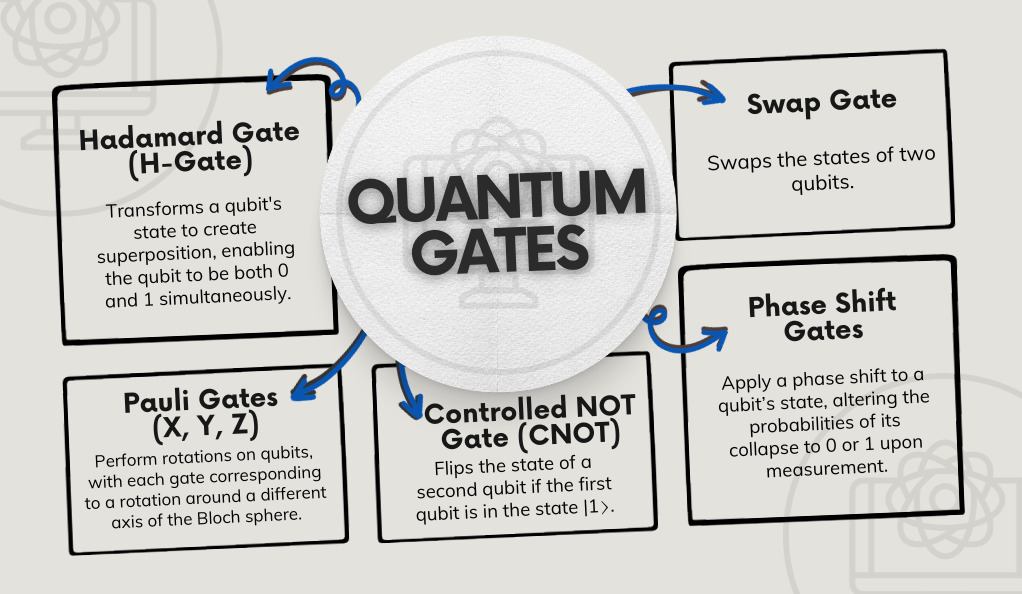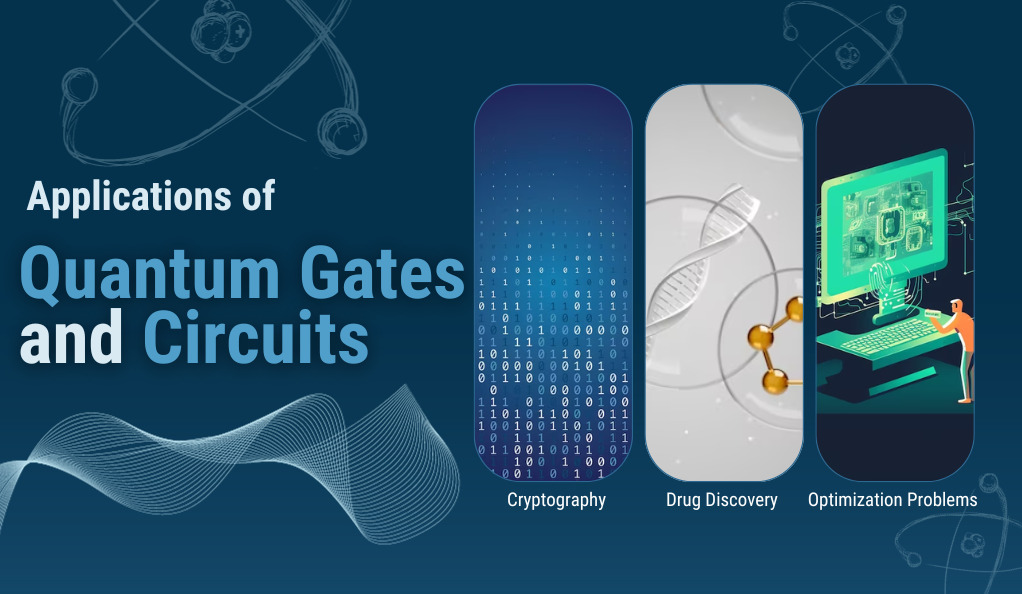In the ever-evolving world of computer science and technology, the promise of quantum computing stands as one of the most thrilling prospects. Far from the realms of traditional computing which relies on bits, quantum computing introduces a paradigm shift, bringing forward qubits that have the capability to revolutionize how we process information.
At the heart of this radical change lie quantum gates and circuits—the foundational elements that drive quantum computations. This article takes you on a journey to explore the intricacies and marvels of these building blocks, shedding light on their operations, applications, and future potential.
| Computing Type | Basic Unit | Characteristics | Performance Advantage |
|---|---|---|---|
| Traditional | Bits | Binary (0 or 1) | Standard operations |
| Quantum | Qubits | Superposition (0, 1, or both simultaneously) | Vast data processing power |
The Significance of Quantum Gates and Circuits
Just as logic gates are fundamental to classical computing, quantum gates are pivotal to quantum computing. They dictate how qubits evolve and interact, enabling quantum algorithms and computations. Quantum circuits, formed by a sequence of quantum gates, determine the progression and outcomes of quantum operations.
Quantum gates and circuits aren’t just conceptual niceties—they’re at the very core of real-world quantum computer designs, being meticulously engineered and tested in labs worldwide. Their optimization and understanding will largely shape how quickly quantum computing becomes a mainstream technology.
A Fascinating Journey Awaits
From defining the basics to diving deep into their types and operations, from discussing practical applications to envisioning the future, this article promises a comprehensive look into the world of quantum gates and circuits. Whether you’re a seasoned tech enthusiast or a curious novice, there’s something in here for everyone. So, let’s embark on this captivating exploration, shall we?
What are Quantum Gates?

Quantum gates are the quantum analog of classical logic gates, manipulating qubits through quantum operations. In contrast to classical gates, quantum gates enable transformations that are not possible in classical computing, thanks to the principles of superposition and entanglement.
Understanding Superposition and Entanglement
Superposition allows a qubit to exist in multiple states at once, providing quantum gates with a broader range of potential operations. Entanglement, another quantum phenomenon, occurs when qubits become correlated in such a way that the state of one qubit instantly influences the state of another, regardless of distance.
The Role of Quantum Gates
Quantum gates manipulate qubits by changing their probabilities, essentially transforming their states to perform computations. For example, a gate might transform a qubit from a state of superposition to a definite state of 0 or 1, depending on the specific operation and inputs.
Types of Quantum Gates
Just as there are various types of classical logic gates, there are several different quantum gates, each serving a unique function.
- Hadamard Gate (H-Gate): Transforms a qubit’s state to create superposition, enabling the qubit to be both 0 and 1 simultaneously.
- Pauli Gates (X, Y, Z): Perform rotations on qubits, with each gate corresponding to a rotation around a different axis of the Bloch sphere.
- Controlled NOT Gate (CNOT): Flips the state of a second qubit if the first qubit is in the state |1⟩.
- Swap Gate: Swaps the states of two qubits.
- Phase Shift Gates: Apply a phase shift to a qubit’s state, altering the probabilities of its collapse to 0 or 1 upon measurement.
Quantum Circuits: Combining Gates for Complex Operations
Quantum circuits are formed by stringing together quantum gates in a sequence, allowing for complex transformations and operations on qubits.
Designing a Quantum Circuit
The design of a quantum circuit involves careful selection and arrangement of quantum gates to achieve a specific computational task. The sequence and type of gates determine the final state of the qubits, and thus, the outcome of the computation.
Example of a Quantum Circuit
Consider a simple quantum circuit designed to create entanglement between two qubits. The circuit might start with a Hadamard gate to put the first qubit in a state of superposition, followed by a CNOT gate to entangle it with the second qubit. This circuit transforms the initial state of the qubits into an entangled state, where the state of one qubit instantly determines the state of the other.
Quantum Gates, Circuits, and Error Correction
Quantum error correction is crucial in quantum computing, as quantum states are extremely delicate and susceptible to errors due to environmental interference.
The Challenge of Quantum Error Correction
The process of error correction in quantum systems is fundamentally different and more challenging than in classical systems. Quantum error correction codes are employed to protect the integrity of quantum information.
Role of Quantum Gates and Circuits in Error Correction
Quantum gates and circuits are intricately involved in the implementation of error correction codes. They enable the encoding, manipulation, and error correction of quantum information, ensuring the reliability of quantum computations.
Applications of Quantum Gates and Circuits

Quantum gates and circuits are pivotal in numerous applications across various industries.
- Cryptography: Quantum computers, with their unparalleled processing power, have the potential to crack current encryption methods. Conversely, they also enable quantum-secure encryption methods, ensuring secure communication.
- Drug Discovery: Quantum computers can simulate molecular structures and interactions at an atomic level, significantly accelerating the drug discovery process.
- Optimization Problems: Industries such as logistics and finance can benefit from quantum computers to solve complex optimization problems more efficiently than classical computers.
The Future of Quantum Gates and Circuits
As research and development in quantum computing continue to accelerate, the future of quantum gates and circuits is bound to witness significant advancements.
Advancements and Challenges
There are ongoing efforts to improve the efficiency, stability, and error rates of quantum gates and circuits. Overcoming these challenges is key to unlocking the full potential of quantum computing.
Shaping the Future of Computing
Quantum gates and circuits stand at the forefront of the quantum computing revolution. Their continuous development and optimization will play a critical role in shaping the future of computing, promising unprecedented computational capabilities.
Conclusion
Quantum gates and circuits are the linchpins of quantum computing, enabling the manipulation and transformation of qubits to perform complex computations. From their fundamental operations to their pivotal role in applications across various industries, these quantum components hold the key to unlocking a new era of computing. As we stand on the cusp of this technological revolution, the exploration and understanding of quantum gates and circuits become ever more crucial, paving the way for a future filled with unimaginable computational possibilities.




